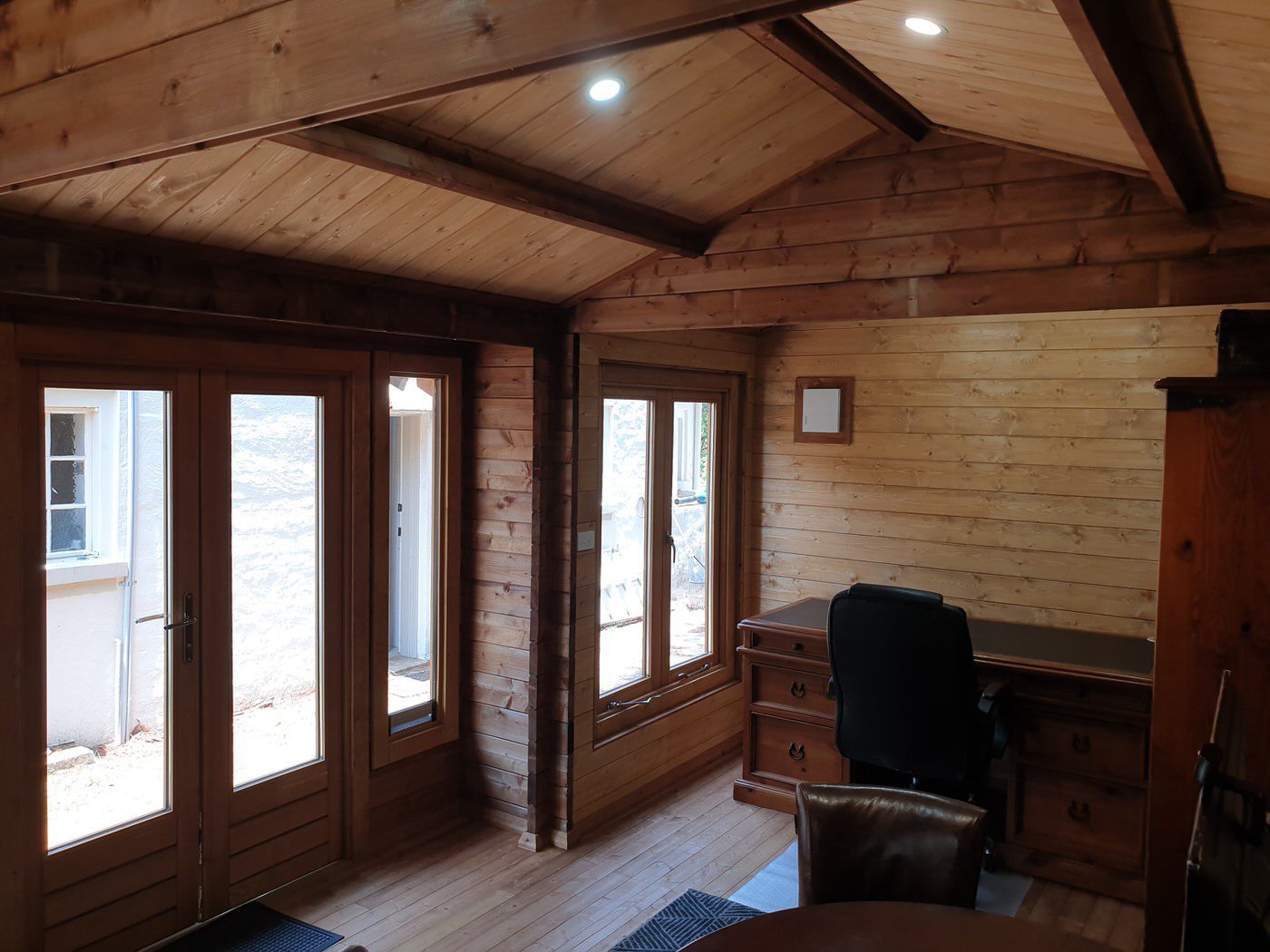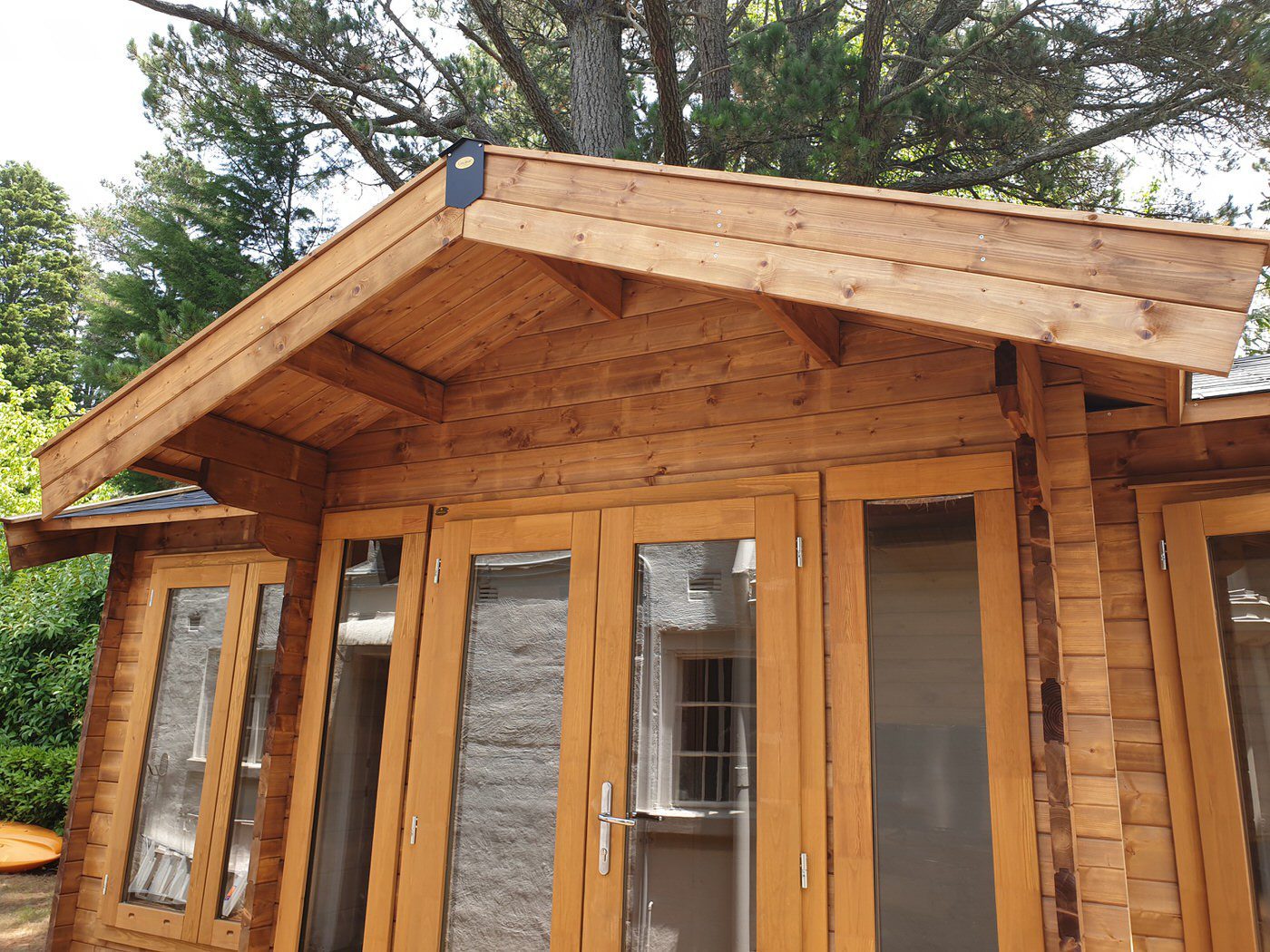A SheShed is the perfect way to get away from it all, without even having to leave your property! Being a solid-wood construction, a SheShed has more natural insulation than a tin shed due to the nature of timber itself, but do you need to add extra insulation to your kitset cabin? The answer is – it depends…
In this article we’ll take a quick look at the benefits of different types of additional insulation you can add to your SheShed, and some factors that you need to keep in mind when planning your kitset build.
An important thing to note here is that insulation itself won’t keep you warm in the winter and cool in the summer; Insulation, refers to how quickly a difference in temperature can transfer from one space into another. For example, how quickly will heat on the inside of your cabin, escape through the walls, floor and roof, and start “leaking” into the air around the cabin? Or, how quickly will the hot summer-sun outside of your cabin, soak through the roof to overheat the inside of your cabin?

Adding insulation is a passive way to slow down the natural heat-transfer process, but does not by itself actively add or remove heat, so depending on your climate, you may still need to consider adding in an extra heating or cooling device such as a fan heater or small air conditioning unit.
We’re looking forward to doing more specific experiments on this in the future, but in the meantime, we can draw parallels with an uninsulated timber-frame home where it’s widely accepted that approximately…
Let’s address each of these five areas and look at what has already been done or can practically be done extra to help keep your cabin comfortable in most conditions.
*Please note that SheSheds is not associated with any of the brands or products mentioned in this article, and we receive no compensation if you choose to purchase any of our recommended solutions.
Should you add it? – We sometimes recommend it, but depending on your climate, it’s often not required…
Option One: Leaving the roof how it comes in the kitset.
This option suits the majority of our customers, as the existing roof boards with the included asphalt tiles have a combined insulation rating of about R 1.84.
Option Two: Purchase the SheShed Roof Insulation Kit.
This is the only insulation option that we provide ourselves, as it’s particularly well suited to the construction style of most our cabins. Following our step-by-step instructions, our commercial-grade foam roof insulation kit gets installed under the asphalt tiles but above the wooden roof boards, leaving the inside of the cabin and ceiling visually unaffected. With this addition, it brings the total roof insulation value up to about R 3.6.
This option is currently available as an optional addon to any of our kitsets that feature asphalt roof tiles, and is priced depending on which size cabin you are building.
Option Three: Lining the roof internally.
An ugly option but sometimes more cost-effective; This involves building an internal ceiling cavity under the roof boards, which you can fill with something like natural wool insulation, Pink Batts® or equivalent and then line with a nice plywood or plaster board. This is helpful if you desire roof insulation higher than R 3.6 but unfortunately lowers the internal height of your cabin and usually covers over the beautiful exposed wooden beams that so many of our customers love.
Option Four: Lining the roof externally.
To avoid lowering your internal ceiling height like mentioned in Option 3, you may decide to instead add additional roof battens on top of the existing roof boards, building yourself a ceiling cavity for adding in extra roof insulation like Pink Batts® or equivalent, and then covering over with a corrugated iron/steel roof and flashing like a traditional house roof.
All our SheShed doors and windows are double-glazed to a high standard to help minimize much of the potential heat loss through these areas. To help further reduce potential heat-loss or drafts, ensure your doors and windows have been installed correctly as per your cabin’s instructions, and double check how evenly they are closing against their frame seals, as their hinges can be adjusted as needed.
Should you consider adding wall insulation to your SheShed cabin? – Sometimes, but hardly ever. Although a lot of heat can be lost through the walls of a building, adding wall insulation is usually reserved for only the coldest winter climates for several reasons. It can be fairly expensive, it reduces the internal size of your cabin, and if installed improperly it can negatively affect the durability and weather-tightness of your cabin.
Option One: Leave the kitset how it comes, but make sure you assemble it correctly to reduce gaps between boards, then inspect and seal any knots in the timber to fill any possible gaps or cracks. And finally, seal and paint at least the outside of the cabin with a good 3-coat or more system.
Option Two: Consider choosing a cabin kitset with thicker walls.
Our smaller 28mm-walled cabins have a natural insulation rating of about R1.96, whereas our kitsets with 44mm and 45mm thick walls are about R3.08 without adding any additional insulation.
Option Three: Build an internal wall cavity to add additional wall insulation.
This involves fixing additional battens to the inside walls of your SheShed, (usually with 45x45mm dimensions), to create a wall cavity for insulation, which then gets covered over with a lining of a quality plywood, or extra wall boards, or more commonly just with standard plasterboard. This lining can then be easily painted or wallpapered to suit your interior designs.
If you decide to go this route with your SheShed, we have slotted metal wall brackets available for purchase that are used to fix any vertical wall battens to the cabin wallboards. These slotted brackets make the internal lining you add, act as a kind of floating shell, allowing the kitset cabin’s wall boards to naturally grow and shrink with temperature changes over the seasons, without cracking your internal lining or causing extra gaps or bowing in the external wallboards that can bring leaks.
Some wall insulation options that you could consider adding in an internal wall cavity include natural wool products, like a Blanket Wool Insulation: This insulation comes in a blanket form and has Thermal ratings of R2.6, R3.2 and R3.6. It can be used on walls and ceilings. The material is safe, healthy and non-toxic, which is always appreciated.
Another commonly used option is Pink Batts® or equivalent fiberglass insulation, usually with a range of sizes, thicknesses and insulation ratings available from most building supply stores.
We almost always recommend purchasing additional underfloor insulation. Why? Because it’s the cheapest and easiest insulation to add to your SheShed during the construction of your cabin. Our experience is: if you think it’s a possibility you’ll need it, you may as well do it now, as you’ll not regret having it, and may struggle to add it later.
In addition to being an insulator, adding underfloor insulation can also help to deaden sound from both outside and inside your cabin, making it perfect for those who want to enjoy some peace and quiet in their SheShed. Another benefit of underfloor insulation is that it can help reduce potential drafts, making the space even more comfortable.
Does SheShed provide underfloor insulation? No, we don’t, as it’s much more cost-effective for our customers to purchase their own underfloor insulation from a local building supplier or chain store, such as Bunnings or Mitre10.
Our first recommendation is usually something like Expol Underfloor Insulation with a rating of R1.8 or similar. One example is Expol Black, which is a graphite infused EPS supplied in the same sizes as the standard white under floor insulation and is a premium product which achieves superior R values. It’s made with a tough polystyrene (EPS) that will NOT SAG or SLUMP over time – providing better protection for all of us who spend more than just weekends in our SheShed cabins!
The best part is they’re easy to install; and will fit in between the bearers under your SheShed.
As an example, you’ll need to purchase enough for 9 square meters (usually two packs) for our Star Cabin Kitset, or four packs for our 19m2 Brook River Kitset.
A high-grade insulation that comes in a 1200 wide roll. You can get pre-cut widths to fit between floor joists. Meets NZ standards and is a high-grade product. Click here to find in NZ.
A quality underfloor insulation that fits between floor joists. Comes in three widths- 450mm, 500mm and 600mm. You roll it out between floor joists and staple in place. Click here to shop NZ or Click here to Shop Australia.
A Polystyrene insulation with a concertinaed edge, which sits hard up against the floorboards. It is a great economic option that is great under a SheShed cabin. Each sheet is 60mm thick, 1200mm long and is available in a wide range of widths: 360mm, 410mm, 440mm, 470mm and 560mm. Click here to shop NZ.
UnderfloorPink® Batts® SnugFloor® is a range of thermal underfloor insulation products R1.6/R2.6 with both narrow & wide options. Click here to shop NZ.
As described in Option One of preventing heat loss through walls, you can help reduce potential gaps and cracks by making sure you assemble the kitset correctly to reduce gaps between boards. After the build is complete, thoroughly inspect and seal any knots in the timber to fill any possible gaps or cracks, then seal and paint at least the outside of the cabin with a good 3-coat or more system.
If you’re looking to buy a SheShed kitset Cabin, it’s important that you understand the importance of insulation and whether or not you need to add it to your build.
Our new Kitset Cabin Range (Tussock, Coastal & Alpine) include the roof insulation. You can check out our full range HERE.
If you’re still not sure which insulation is best for your SheShed cabin, or if you have any other questions about the build process, please call us. Our team of Shed Consultants are more than happy to help answer any questions you may have.



2024
SheShed Australia & New Zealand. All rights reserved.